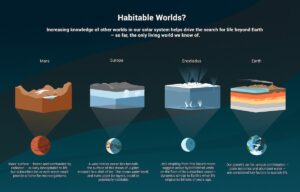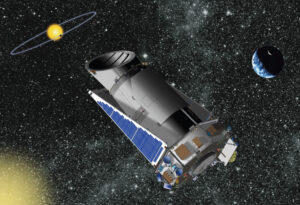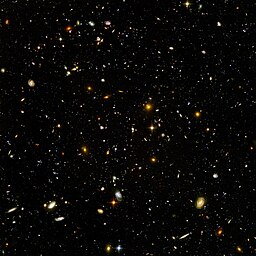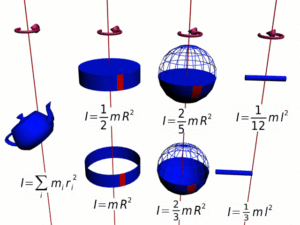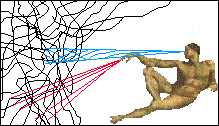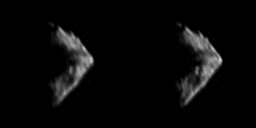
Arjuna Asteroids: Cosmic Wanderers and Earth’s Temporary Companions
Imagine a group of celestial nomads, silently traversing the vast expanse of our solar system, carrying with them secrets of our cosmic past. These enigmatic wanderers are none other than the Arjuna asteroids, named after the legendary warrior from the ancient Indian epic, the Mahabharata. Just as Arjuna’s quest for knowledge and understanding shaped his destiny, these asteroids offer us a unique window into the formation and evolution of our solar system, promising to reshape our understanding of planetary science and resource exploration (Morbidelli et al., 2015; DeMeo et al., 2015).
The Celestial Dance of the Arjuna Asteroids
Picture a cosmic ballet, where these rocky bodies pirouette around the Sun in a mesmerizing orbital dance. Unlike their more conventional asteroid cousins, the Arjuna asteroids exhibit a subtle grace in their movements, with slight inclinations and eccentricities in their orbits. These delicate variations in their celestial choreography hint at a complex past, possibly shaped by the gravitational tugs of nearby planets or dramatic collisions with other space rocks (Morbidelli et al., 2015).
As we observe these cosmic dancers through our telescopes, we can’t help but wonder about the stories they could tell. Each wobble in their orbit, each subtle deviation from a perfect circle, could be a clue to the specific conditions under which they formed billions of years ago. It’s as if we’re watching a time capsule in motion, carrying within it the secrets of our solar system’s tumultuous youth (DeMeo et al., 2015).
But the intrigue doesn’t stop there. The composition of these asteroids adds another layer to their mystique. If we could reach out and touch an Arjuna asteroid, what would we find? The answer to this question could rewrite our understanding of how materials were distributed during the solar system’s formative years. Imagine discovering that these asteroids are rich in certain minerals – it would be like finding a cosmic treasure map, pointing us towards regions of the early solar system with unique environmental conditions (DeMeo et al., 2015).
A Cosmic Game of Catch: Earth’s Temporary Moons
Now, let’s add a twist to our cosmic ballet. What if one of these graceful dancers decided to take a detour and waltz with our planet? This isn’t just a flight of fancy – it’s a real possibility that has astronomers on the edge of their seats. Due to their unique orbital dynamics, there’s a chance that an Arjuna asteroid could enter a highly elliptical trajectory, bringing it tantalizingly close to Earth. And if the cosmic dice roll just right, our planet’s gravitational field could reach out and snag this passing traveler, turning it into a temporary second moon (Domingos & Winter, 2005).
This celestial game of catch, known as “mini-moon” capture, is a delicate dance of gravitational forces and orbital mechanics. It’s not something that happens every day, which makes it all the more exciting when we spot a potential candidate. Take, for example, the asteroid 2016 HO3, which has been playing an extended game of orbital tag with Earth. Its stable co-orbital configuration serves as a tantalizing preview of what we might expect from a captured Arjuna asteroid (Domingos & Winter, 2005).
But how exactly does our planet manage to snag these cosmic passersby? It’s all about timing and positioning. As an asteroid approaches Earth, our planet’s gravity begins to tug at it, like a cosmic fisherman casting out a gravitational line. If the asteroid’s speed and trajectory are just right, it can get caught in this invisible net, its path bending into a temporary orbit around our world (Domingos & Winter, 2005).
However, these captures are fleeting affairs in cosmic terms. Once caught, these mini-moons typically stick around for a cosmic blink of an eye – anywhere from a few months to a couple of years. Their stay is often cut short by the gravitational interference of other celestial bodies, most notably our permanent moon. It’s as if these temporary visitors get homesick for the vast expanse of space and bid us farewell, slipping back into their solar orbit (Domingos & Winter, 2005).
A Cosmic Visitor: The Tale of 2024 PT5
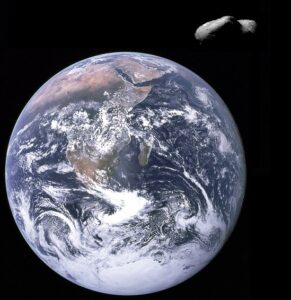
Speaking of cosmic visitors, let’s fast forward to a recent discovery that has set the astronomical community abuzz. On August 18, 2024, the ever-vigilant eyes of the Pan-STARRS observatory in Hawaii spotted something unusual – a new asteroid, soon to be christened 2024 PT5. But this wasn’t just any space rock; this member of the Arjuna asteroid family was on a collision course with Earth’s gravitational field, setting the stage for a rare and exciting event.
From September 29 to November 18, 2024, 2024 PT5 is slated to become Earth’s latest temporary mini-moon. Imagine looking up at the night sky during those autumn nights, knowing that somewhere up there, a piece of cosmic history is circling our planet, a testament to the dynamic nature of our solar system.
This celestial newcomer is no pebble, either. Estimated to be between 150 and 330 feet (46 to 100 meters) in size, 2024 PT5 is a substantial visitor, offering scientists a unique opportunity to study a sizeable near-Earth object up close. It’s like having a cosmic laboratory right in our backyard, allowing for detailed observations that could unlock new insights into the composition, physical properties, and orbital dynamics of these fascinating objects.
The arrival of 2024 PT5 is more than just a cosmic curiosity; it’s a golden opportunity for scientific advancement. Astronomers worldwide are gearing up to train their instruments on this temporary moon, hoping to glean valuable data about its origins and evolution. By studying 2024 PT5, we might be able to peer back in time, uncovering clues about the early history of our solar system and the processes that shaped the formation of planets and other celestial bodies.
But the significance of this event extends beyond pure scientific curiosity. The close approach of 2024 PT5 provides a crucial test for our capabilities in detecting and tracking near-Earth objects (NEOs). These asteroids and comets that pass close to Earth’s orbit are more than just fascinating scientific subjects; they represent potential threats to our planet. By honing our skills in identifying and monitoring objects like 2024 PT5, we’re better preparing ourselves to spot and potentially mitigate any future hazardous asteroids that might cross our path.
And let’s not forget the excitement this event brings to amateur astronomers and space enthusiasts. With the right equipment, it might be possible to spot 2024 PT5 from your own backyard. Imagine the thrill of pointing your telescope at the night sky and catching a glimpse of Earth’s temporary companion, a cosmic dance partner that has traveled billions of miles to waltz with our planet.
Unlocking the Secrets of the Solar System
As we turn our gaze to the Arjuna asteroids and visitors like 2024 PT5, we’re not just indulging in astronomical curiosity – we’re unlocking the secrets of our cosmic neighborhood. These celestial bodies serve as time capsules, preserving the conditions of the early solar system in their rocky embrace. By studying their properties, we gain invaluable insights into planetary formation, the distribution of resources in space, and even the potential for life beyond Earth (Morbidelli et al., 2015; DeMeo et al., 2015).
Take, for instance, the composition of these asteroids. Many Arjuna asteroids, including 2024 PT5, are believed to be of the C-type, rich in carbonaceous materials. This isn’t just a dry scientific fact – it’s a window into the past. These carbon-rich bodies could be relics from the very building blocks that formed our planets, preserving the primordial materials that coalesced in the swirling disk of gas and dust around our young Sun (DeMeo et al., 2015).
But the Arjuna asteroids aren’t just history books written in stone; they might also hold the key to humanity’s future in space. The growing demand for raw materials on Earth has turned our gaze to the stars, with asteroid mining becoming an increasingly tantalizing prospect. If asteroids like those in the Arjuna family indeed harbor significant resources – think rare minerals, metals, and even water – they could become the stepping stones for our expansion into the solar system (DeMeo et al., 2015).
Imagine a future where spacecraft rendezvous with these cosmic treasure troves, extracting valuable materials to fuel our exploration of the planets and beyond. The water found on C-type asteroids could be split into hydrogen and oxygen, providing both breathable air and rocket fuel for deep space missions. The metals could be used to construct space stations and interplanetary vessels. In this light, each Arjuna asteroid becomes not just an object of scientific study, but a potential oasis in the vast desert of space.
Charting the Course for Future Exploration

As our understanding of the Arjuna asteroids grows, so too does our ambition to explore them up close. Scientists and space agencies around the world are already drawing up plans for future missions that would bring us face-to-face with these cosmic wanderers. Imagine a spacecraft performing a delicate dance around an Arjuna asteroid, its instruments peering into craters and crevices, uncovering secrets hidden for billions of years (DeMeo et al., 2015).
We’ve already seen the incredible success of missions like NASA’s OSIRIS-REx and Japan’s Hayabusa2, which have given us unprecedented close-up views of asteroids. These missions have not only captured stunning images but have also collected samples, bringing pieces of these distant worlds back to Earth for study. The insights gained from these missions have been nothing short of revolutionary, reshaping our understanding of asteroid composition and evolution (DeMeo et al., 2015).
Now, picture similar missions to the Arjuna asteroids. A spacecraft could orbit one of these bodies for months, mapping its surface in exquisite detail, analyzing its composition with spectrometers, and perhaps even landing to collect samples. Such a mission would provide a treasure trove of data, helping us piece together the puzzle of our solar system’s history.
But why stop at observation? The unique orbital characteristics of the Arjuna asteroids make them particularly enticing targets for more ambitious endeavors. Their proximity to Earth and low-inclination orbits could make them ideal candidates for resource extraction missions in the future. Imagine a mining operation on an Arjuna asteroid, with robots extracting valuable minerals and water, processing them on-site, and sending the refined materials back to Earth or to other space-based facilities.
Conclusion: A New Frontier of Discovery
As we stand on the brink of this new era of asteroid exploration, the Arjuna asteroids beckon to us, promising revelations that could reshape our understanding of the cosmos. Each new discovery, each close encounter like that of 2024 PT5, brings us one step closer to unraveling the mysteries of our solar system’s birth and evolution.
These celestial wanderers, named after a legendary warrior, are leading us on a quest for knowledge that spans billions of years and billions of miles. They challenge us to push the boundaries of our technology, to ask bold questions, and to dream of a future where the resources of the solar system are within our grasp.
As we continue to study the Arjuna asteroids, we’re not just learning about distant rocks in space. We’re uncovering the story of our own origins, written in the language of orbital mechanics and mineral composition. We’re exploring potential futures, where asteroids become stepping stones to the planets and beyond. And perhaps most importantly, we’re feeding that most fundamental of human drives: the desire to explore, to understand, and to push beyond the boundaries of the known.
So the next time you look up at the night sky, remember that among the twinkling stars and familiar planets, the Arjuna asteroids are out there, silently circling the Sun. They carry within them the history of our solar system and, quite possibly, the keys to our future among the stars. As we continue to study these fascinating objects, who knows what wonders we might uncover, what secrets we might unlock, and what new chapters we might write in the grand story of cosmic exploration.
References
DeMeo, F., C. Alexander, Walsh, K., C. Chapman, & R. Binzel. (2015). The compositional structure of the asteroid belt. https://doi.org/10.2458/azu_uapress_9780816532131-ch002
Domingos, R., & Winter, O. (2005). Possibility of collision between co-orbital asteroids and the earth. Computational and Applied Mathematics, 24(1). https://doi.org/10.1590/s0101-82052005000100006
Morbidelli, A., K., Walsh, O’Brien, D., D., Minton, & W. Bottke. (2015). The dynamical evolution of the asteroid belt. https://doi.org/10.2458/azu_uapress_9780816532131-ch026
